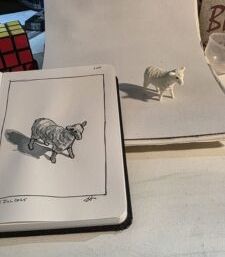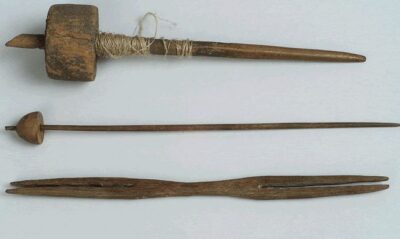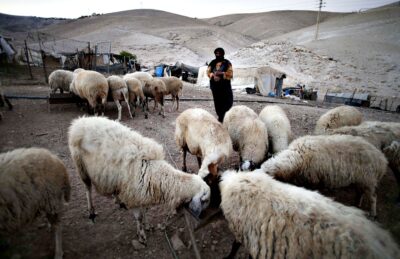
The random object from the Random Object Randomogrifier today was a little Safari Ltd. ewe. While sketching her essence and warming up the watercolors, we walked through 10,000 years of domestication, spinning, and sheep-powered civilization.
Sketch and Coffee Live at 5:30am Texas time
I talked about why humans chose sheep over goats for fiber: they huddle, they follow, and they were already halfway to being herded. Goats got domesticated too, but mostly for meat and milk. Sheep gave us all that AND (eventually) wool. We started breeding them to stop shedding about 5,000 years ago so we no longer had to chase through the fields gather tufts of fur. That shift from gathering tufts to shearing flocks helped drive Bronze Age tool innovation, including some of the earliest metal shears.
We touched on drop spindles that go back 20,000 years, earlier than sheep domestication itself. Humans were spinning sinew and fiber before they ever put it on a loom. We also noted that woven clothing likely existed well before the sheep were domesticated, and certainly before they stopped shedding.

From there we dove into the Bedouins, still living the flock-based life. I told about the time in Iraq where hundreds of sheep wandered into our military camp. One even snuck into a buddy Chad’s tent, a story that still makes me laugh today. That moment captured something essential: sheep don’t know about fences, borders, or geopolitics. They just move with the people who live by them.

Finally, we touched on the present. There are around 100,000 sheep farms in the U.S., but only about a third shear their flocks. The rest raise meat breeds, whose wool is too coarse to profit from and is often composted instead. Still, 3.2 million sheep produce around 23 million pounds of wool annually. We also gave a nod to FFA and 4-H kids, fire grazing programs where the allow sheep to control the underbrush, and the rescue farms that keep the FFA show animals that no one has the heart to butcher.
Leave a Reply